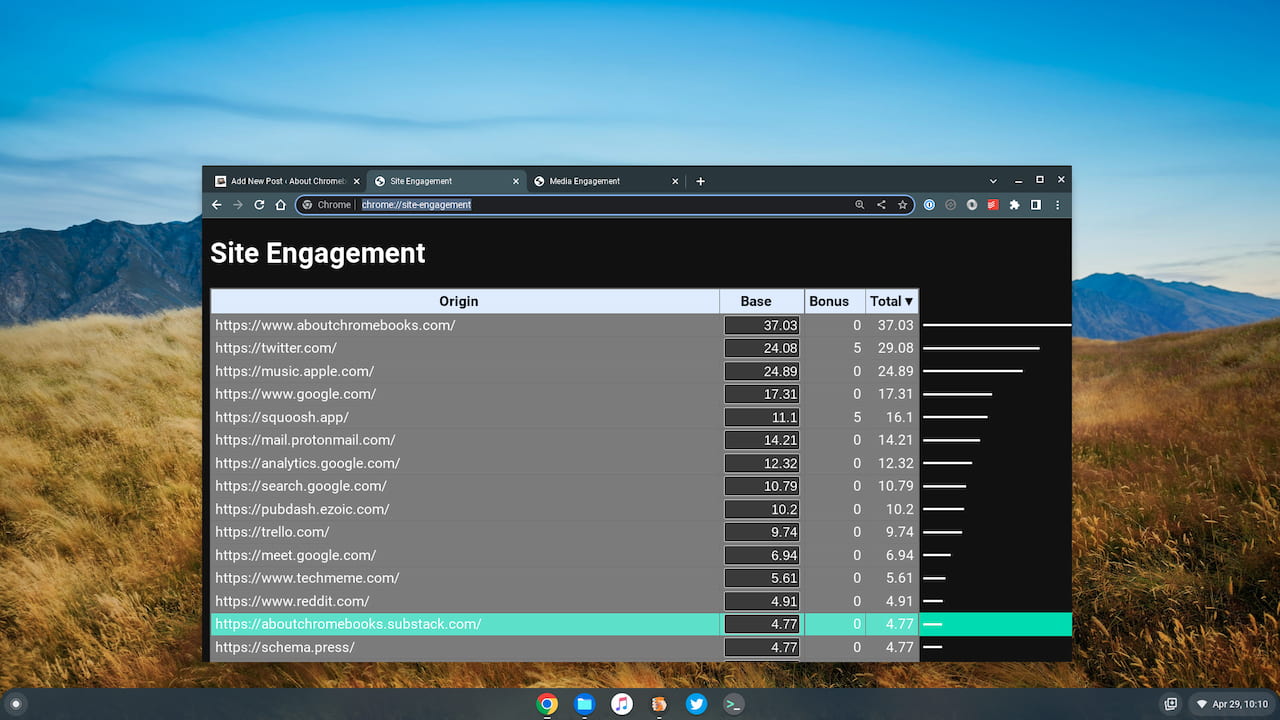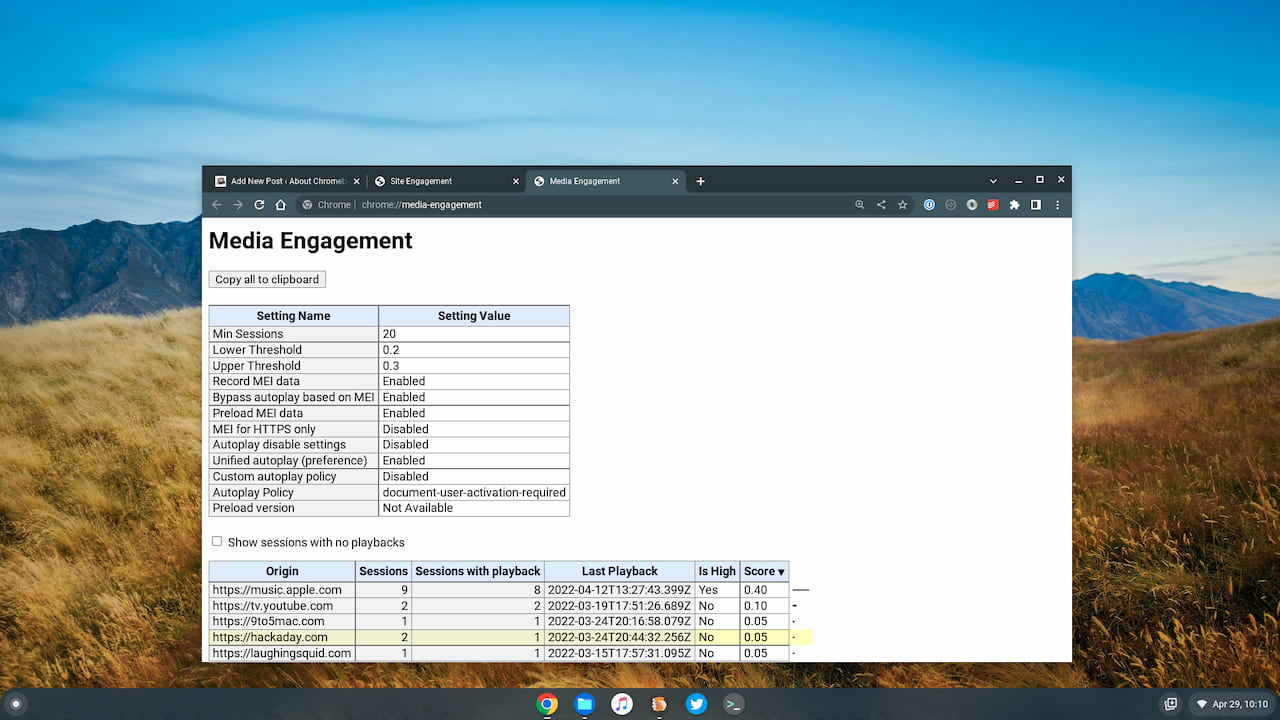Although Chrome OS is arguably one of the most secure desktop operating systems, I wouldn’t call it the most private. You need a Google account to use Chrome OS, unless you’re in Guest Mode, for example. And there’s quite a bit of usage and telemetry data captured. Need an example? Here’s how to view some of the internal Chrome OS engagement metrics.
I was browsing through some of the internal Chrome OS URLs earlier this morning. Yes, these are the types of things I do over that first cup of coffee. Two of those URLs had the word “engagement” in them so of course, I clicked them.
What domains have the highest Site Engagement?
The first place you can point your Chrome OS browser to is chrome://site-engagement/. It opens up this browser tab with some interesting information:

This appears to be a chart that scores how much time I’ve spent, or engaged with, various sites. It doesn’t show every URL, like my browser history. Instead, this is at the domain level. And this is just a portion of my personal site engagement data; the list goes on and on.
I have no idea what the “Bonus” column is, although I can take a stab at it. Out of all of the origin sites appearing in my list, Twitter and Squoosh are PWAs or progressive web apps that I installed. And both are the only domains earning a five-point engagement bonus.
What media sites do you use for audio and video?
The second internal Chrome OS URL I checked is found by typing chrome://media-engagementin your browser.
As you could guess, it shows sites where I’ve engaged with some media content. There’s also some data on my media configuration, such as, do I have autoplay enabled.

Since I listen to Apple Music quite a bit, I’m not surprised to see it at the top of the list. Clearly, I’ve viewed or listened to some media on a few other sites as well.
Note that these images are from the HP Chromebase that I recently reviewed. I haven’t used that machine much lately and I’m preparing to send it back. Presumably on my everyday Chromebook, the reliable 2018 Acer Chromebook Spin 13, there would be quite a bit more engagement data to be seen. I’d expect if you’ve used your own Chromebook or other Chrome OS device for long, you’ll see more data too.
I can’t speak to if or how Google uses these internal Chrome OS engagement metrics. For all I know, this data is just a locally stored view. And actually, both internal URLs have existed for years. The media engagement data arrived in 2017 and I believe the site engagement metrics launched well before then.
As much as I prefer Chrome OS to other desktop operating systems, every so often I wonder about the privacy aspects. Sure, I know Chrome OS is a closed-source Google product built atop an open-source project. MacOS and Windows are closed-source too; I know that both of those companies gather telemetry and other data as well.
So Chrome OS is no different in that regard. I just wish I knew more about how Google uses internal Chrome OS data. In the meantime, all I can do is view my engagement metrics and wonder.


2 Comments
Cool. People complain too much about Google and privacy, the threat is no bigger than any other company including ones who say they put privacy first. Time and time again things that were private or secure turn out not to be. If you really care about privacy then pretty much stay away from the internet and have no friends who use the internet.
Kevin this isn’t specific to Chrome OS. The same urls (or equivalent) work in the same way on Windows for Chrome and Edge.